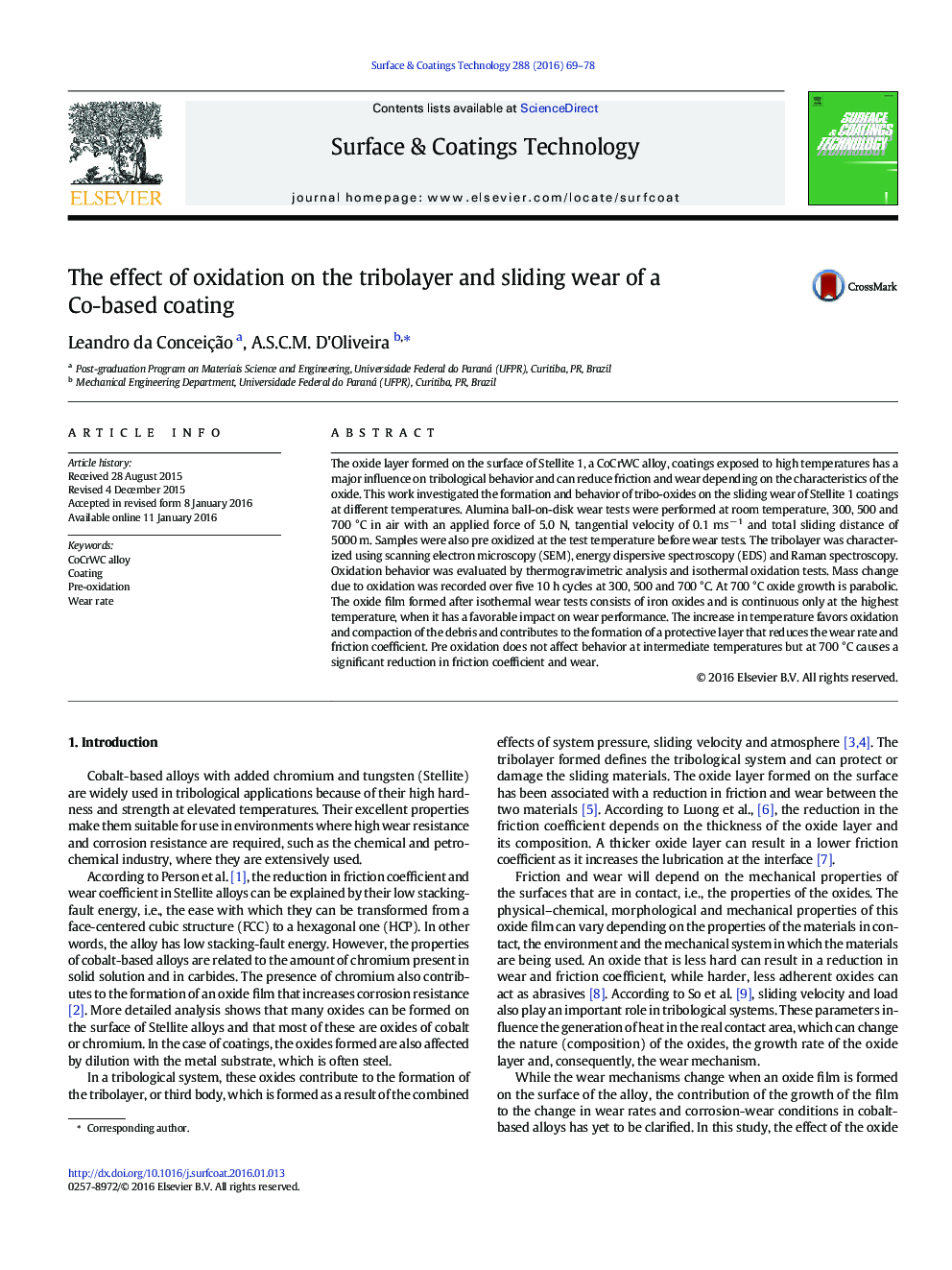| کد مقاله | کد نشریه | سال انتشار | مقاله انگلیسی | نسخه تمام متن |
|---|---|---|---|---|
| 1656707 | 1517591 | 2016 | 10 صفحه PDF | دانلود رایگان |

• High temperature wear is a balance between oxidation and material removal rate.
• The tribolayer and oxide film have similar composition but different morphology.
• Up to 500 °C the formation of oxide clusters determines the wear behavior.
• Faster oxidation kinetic contributes to form a continuous tribolayer during wear.
• During sliding at 700 °C, oxidation and the material removal rate compete.
The oxide layer formed on the surface of Stellite 1, a CoCrWC alloy, coatings exposed to high temperatures has a major influence on tribological behavior and can reduce friction and wear depending on the characteristics of the oxide. This work investigated the formation and behavior of tribo-oxides on the sliding wear of Stellite 1 coatings at different temperatures. Alumina ball-on-disk wear tests were performed at room temperature, 300, 500 and 700 °C in air with an applied force of 5.0 N, tangential velocity of 0.1 ms− 1 and total sliding distance of 5000 m. Samples were also pre oxidized at the test temperature before wear tests. The tribolayer was characterized using scanning electron microscopy (SEM), energy dispersive spectroscopy (EDS) and Raman spectroscopy. Oxidation behavior was evaluated by thermogravimetric analysis and isothermal oxidation tests. Mass change due to oxidation was recorded over five 10 h cycles at 300, 500 and 700 °C. At 700 °C oxide growth is parabolic. The oxide film formed after isothermal wear tests consists of iron oxides and is continuous only at the highest temperature, when it has a favorable impact on wear performance. The increase in temperature favors oxidation and compaction of the debris and contributes to the formation of a protective layer that reduces the wear rate and friction coefficient. Pre oxidation does not affect behavior at intermediate temperatures but at 700 °C causes a significant reduction in friction coefficient and wear.
Journal: Surface and Coatings Technology - Volume 288, 25 February 2016, Pages 69–78